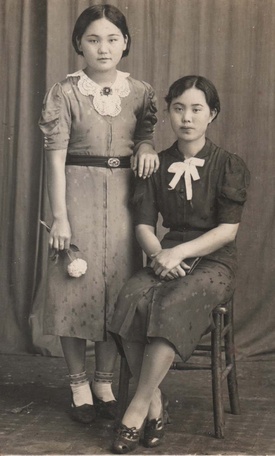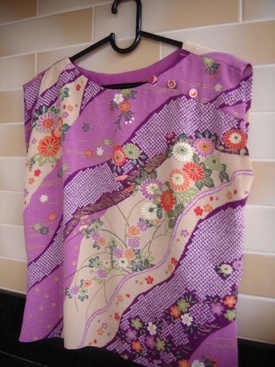I was deeply moved when I read the story of Mia Nakaji Monier, which was published in Discover Nikkei on September 21. As soon as I read that Mia had found a Japanese fabric store, attended sewing classes there with her mother, and made various things together, I felt a connection to my mother's life. I looked back fondly and thought, "Oh, there was a time like that for us, too."
My mother was born and raised on a farm in the state of São Paulo. Despite living in poverty, she had many ideas and enjoyed every day since she was a child. For example, she would unravel old clothes to make aprons, hats, and accessory cases, and weave sandals for her younger brothers out of corn husks. Unlike me, my mother was very dexterous from a young age, but she didn't seem interested in teaching me how to dress, since I was clumsy.
However, in 1964, at my mother's suggestion, I started learning dressmaking from a Brazilian teacher on my way home from high school. However, I wasn't interested at all, and my mother told me, "The Brazilian way of teaching is different after all, so if it's not interesting, then quit," so I stopped soon after.
A decade or so later, in the 1980s, I had an encounter that sparked my love for sewing. A Japanese person living in São Paulo introduced me to a store specializing in Japanese fabrics. The store was located in the Jardins area, where many Japanese companies are located, but it wasn't well known among Brazilians or Japanese descendants, and most of its customers were the wives of Japanese trading company employees.
When I went there, I was thrilled! There were all kinds of fabrics with patterns and colors that I liked, and I felt like I had found a treasure. According to the store clerk, a Japanese company had built a factory in Brazil, and was making 100% cotton fabrics and exporting them all over the world. And the fabrics on display in the store were the "leftovers" from those exports. But even though they were "leftovers," they were still plenty of bolts of cloth.
When my mother saw how happy I was to have found Japanese fabrics, she said, "Well, I have no choice. Let's start with a skirt," and taught me how to sew from scratch. It was the most fun class of my life. Since then, I have enjoyed making clothes under my mother's guidance.
At the time, I was a teacher of Brazilian language and literature, and I was busy every day, but on my days off, I would get up early and sew all day long. Thanks to that, I realized that my closet was overflowing with clothes I had made myself: dresses, blouses, skirts, pants, shirts, etc., all 100% cotton and suitable for the Brazilian climate.
My colleagues and friends would often ask me, "Where did you buy that outfit?" and "Is it made in Japan?" "Really? It's your creation?!" "It's great, because you can make whatever you want." "If you ever stop wearing it, give it to me." And so on, we started having lively conversations.
For about 10 years since I first encountered the Japanese fabric specialty store, I have visited the store, bought various fabrics, and made countless clothes. I am not very skilled, but I wanted to make the most of the quality of Japanese fabrics, and I worked hard to complete the product, even if it took a long time.
I have made them not only for myself, but also as gifts for friends on many occasions.
Unfortunately, I don't have any photos, but I still remember each and every piece of clothing I made. What the patterns were, how I made them, and my family's reactions. When my father saw my pale blue two-piece suit, he said, "It looks cool!" But when I made a slightly flashy pink blazer, he asked me with a worried look, "Is that kind of thing popular now?"
My mother also seemed pleased with my work and would occasionally praise me, saying, "Well done."
My mother, who taught me the joys of dressmaking, passed away 26 years ago. And the only store in São Paulo that specialized in Japanese fabrics disappeared about 10 years ago. Since then, there have been no stores that sell Japanese fabrics.
But I still enjoy making clothes, the only thing that's difficult is finding fabrics that I like, because there are fewer and fewer fabric stores.
I'm planning on visiting Japan next fall and heading to Yuzawaya 1 to pick up a ton of fabric. I can't wait!
Notes:
1. A Japanese store that carries a wide variety of clothing fabrics
© 2016 Laura Honda-Hasegawa






